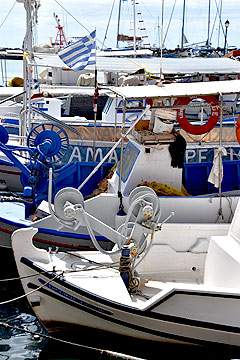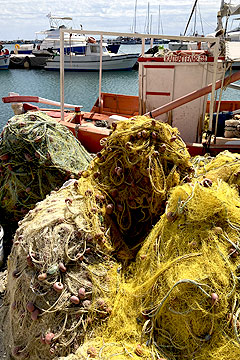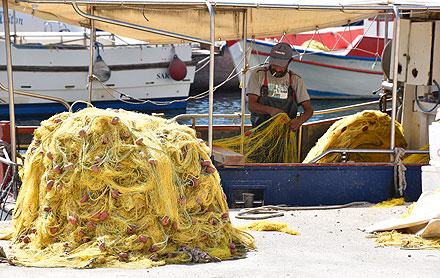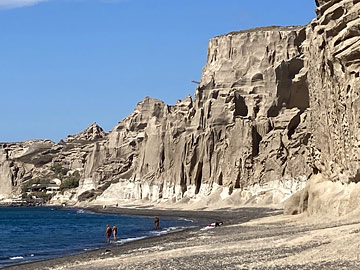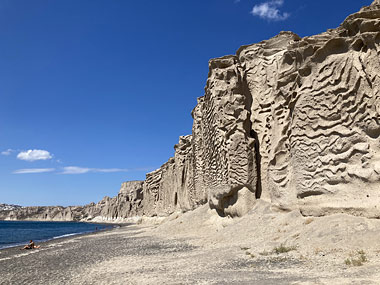

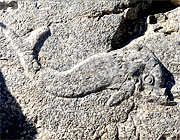
The ancient Greek town of Thera was a major settlement with much, including Roman additions, to be seen.
Vlichada offers excellent food, fine sea views and spectacular cliffs.
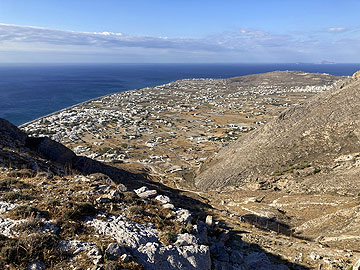
Ancient Thera was founded by the Lacedaemonians, later known as Spartans, from Laconia, the south east region of the Pelopponese, around 900BC, on the flank of Mesa Vouno, 369m above the sea.
The very steep, mostly cobbled road to it is composed of around 22 switchbacks, it's not for the faint-hearted! There is very little parking at the top.
Spread along a ridge the ancient city was around 800m long but barely 150m wide.
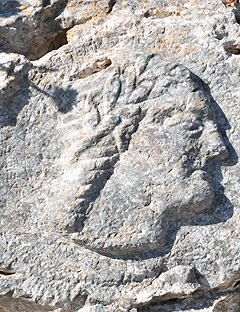
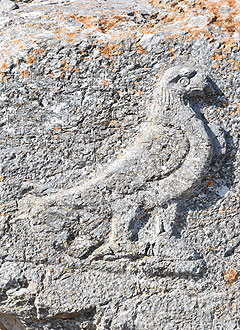
Little is left of the Sanctuary of Aphrodite at the north end of the site but the Sanctuary of Artemidoros further south has some lovely stone carvings.
Artemidoros from Perge in Asia Minor founded the sanctuary some time around the third century BC. The sanctuary is dedicated to a number of gods and goddesses including Zeus, Apollo, Poseidon and Hekate.
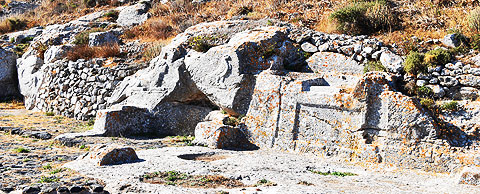
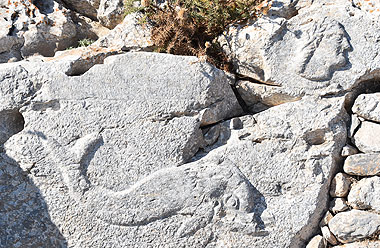
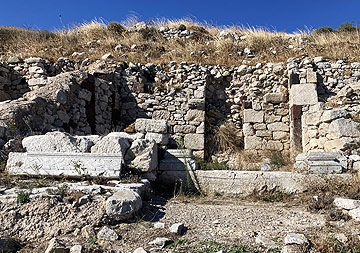
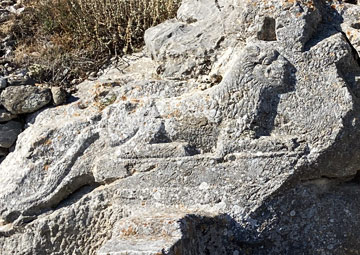
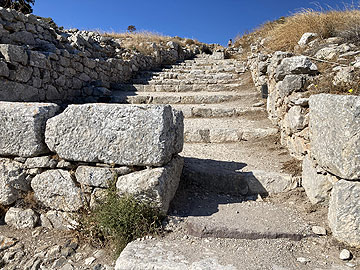
The entrance to the site is via a steep set of steps in the north east quarter. The city had a main street stretching on the east side from north east to south west. A grid of streets stretches west over the ridge between the houses and public buildings. The steepness of the ridge was managed by stretches of steps.
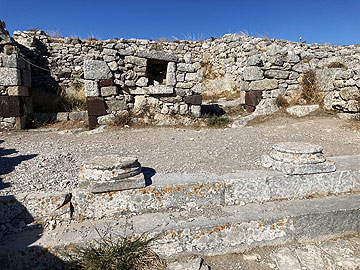
From around the mid 3rd century BC Thera was in the possession of Ptolomeic Egypt. The commander of the garrison, effectively the ruler of Thera, was appointed by the pharaoh until the end of Ptolomeic domination around 145 BC.
The north east steps lead to the remains of a building which is thought to be the residence of the commander and several members of the garrison. In the vicinity, further up the slope, were the buildings of the garrison itself.
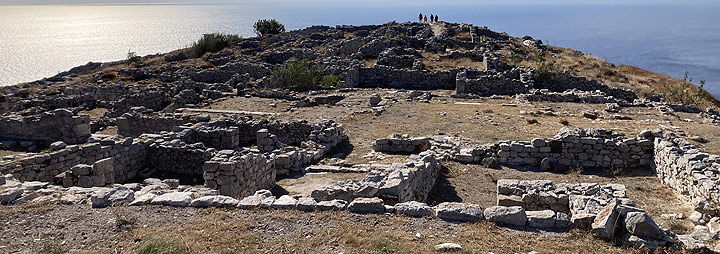
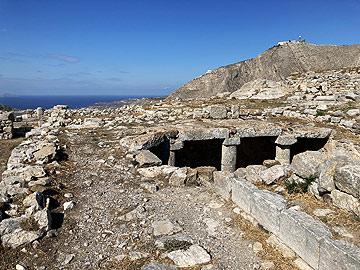
Private houses were situated mainly along the top of the ridge or in terraces on the eastern slope; only later were some residences built along the steeper western slope.
As the city developed through the Ptolomeic period the area on and close to the ridge became dominated by the dwellings of more affluent families, the poor moving out to the periphery of the city below.
Richer homes were decorated with wall paintings, marble statuettes and mosaic floors.
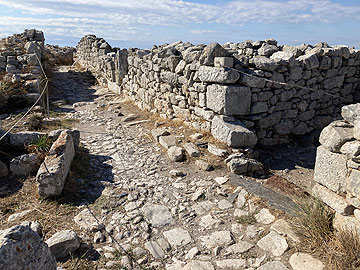
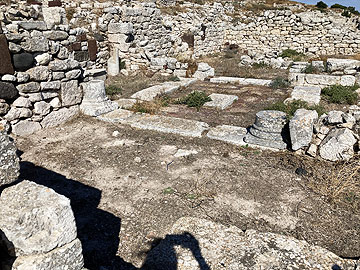
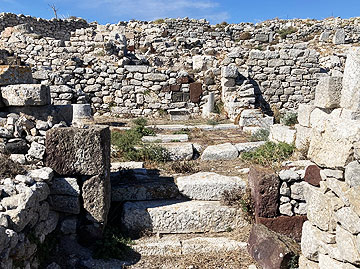
The houses were typically Hellenistic in style, a style followed by the Romans. Built around an open courtyard they were often on two levels above ground, rainwater being collected in underground cisterns.
The paved streets were crossed by covered gutters which formed the city's sewage system.
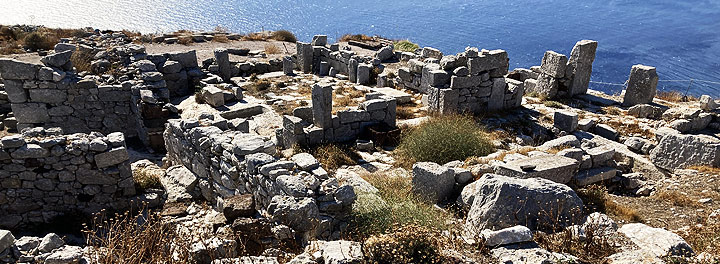
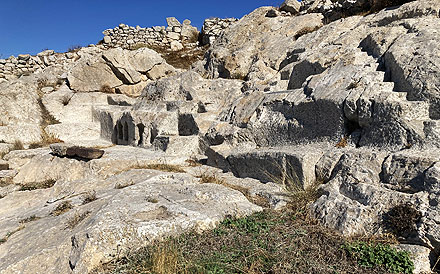
The south east section of the city was a cult centre devoted to sanctuaries and temples including the Sanctuary of Apollo Pythios which was mostly destroyed by a church built on the site in the 6th century BC. Close by are the remains of a large structure which was probably once the Basilistai, where an association of members of the garrison gathered to worship the Ptolomeic rulers.
On the west side of the ridge in the sacred area was a sanctuary for three Egyptian gods: Serapis, Isis and Anubis. The cult of these three gods was brought to Greece during the Ptolomeic period, this sanctuary was founded in the first half of the 3rd century BC.
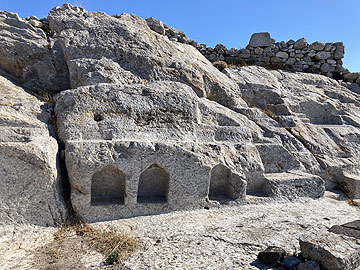
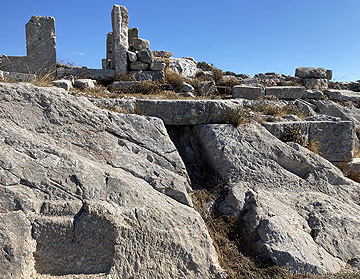
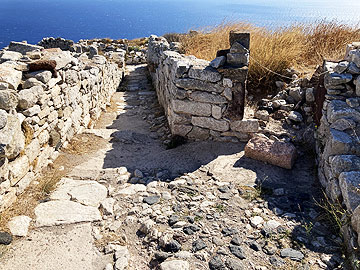
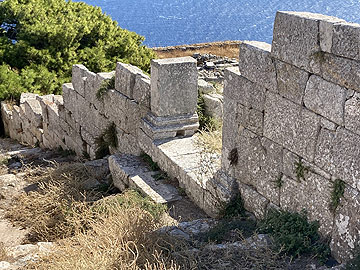
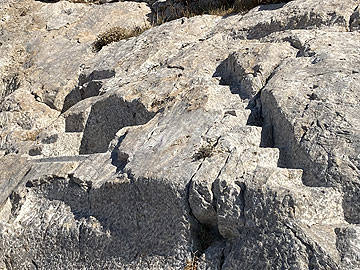
South-east of the sanctuaries are the remains of the Temple of Apollo Karneios, and at the extreme southern end of the city, the remains of the Roman baths, a Gymnasium for young men in the military, and a cave dedicated to Hermes and Heracles. These areas were cordoned off.
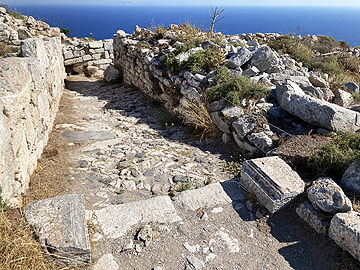
On the east slope below the domestic housing, were large public structures, such as the theatre and agoras.
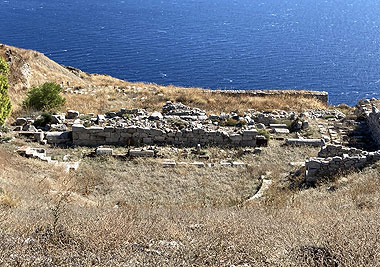
The theatre could hold around 1500 people in five wedge-shaped sections of sloped seating separated by stairways. Underneath the auditorium was a large cistern for collecting rain water.
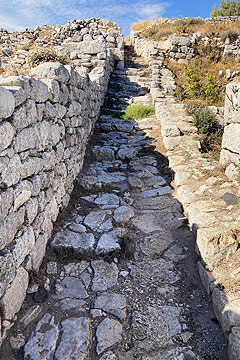
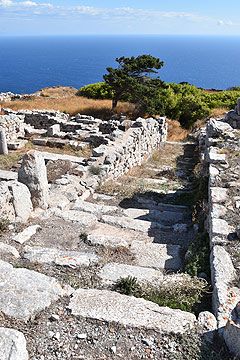
The theatre and several other public buildings lie on the major north-south street through the city.
Across the street from the theatre and a little further north is a stoa that once fronted another public building whose purpose is unknown. Next to this, on the north side, were a public latrine and Roman baths.
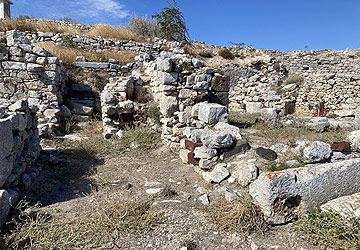
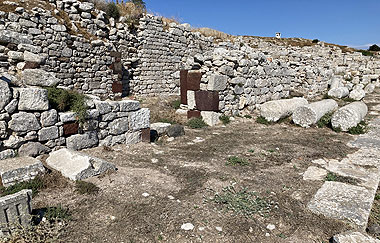
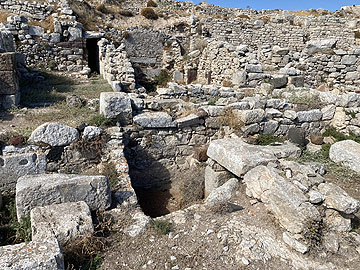
Across the street from the baths was the House of Tyche, named for the fragment of a statue of the goddess Tyche found there.
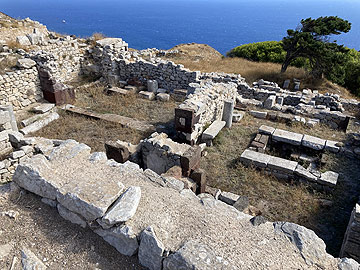
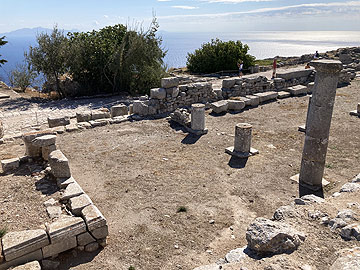
North of the public baths was a long stoa dating from the 3rd century BC called the Basilike stoa. This was almost certainly the administrative centre of the city.
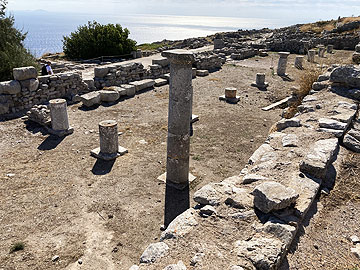
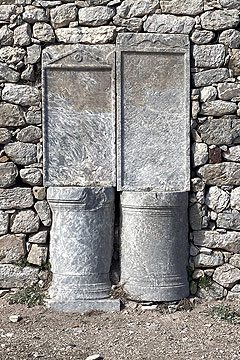
The Basilike stoa was built in the third century BC but underwent major repairs over the course of time.
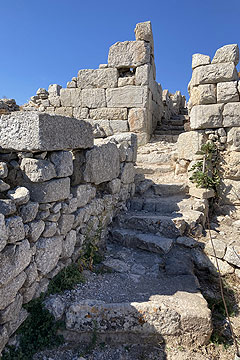
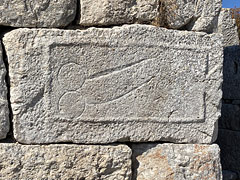
In the second century AD the north part of the building became an area devoted to the worship of the Roman emperor and his relatives.
Across the main street from the Basilike stoa the agora stretched north on three levels. The agora was the hub of commercial and political life, a place for citizens to meet and transact business.
In front of the buildings were statues on pedestals where offerings could be made. In the oldest agora to the south, several deities were worshipped, including Athena Polias and Zeus Polieus in their roles as protectors of the city. There were probably altars in the open spaces as well as the mobile tents of traders.
On the north side of the middle agora was the Temple to Dionysus.
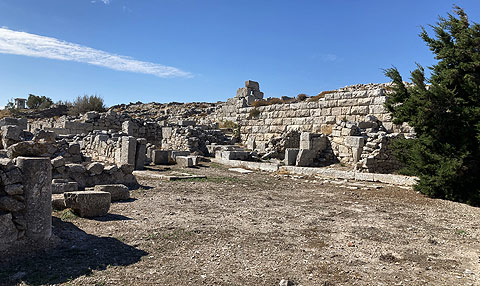
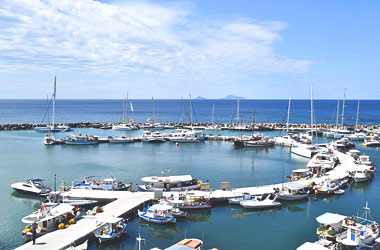
From Ancient Thera we drove to the south west of the island and Vlichada for lunch. The taverna we were planning on visiting didn't open until 1pm but a short distance away, on the cliff top, was Dimitri's, open and serving.
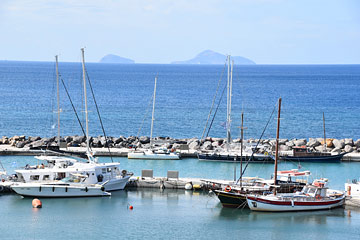
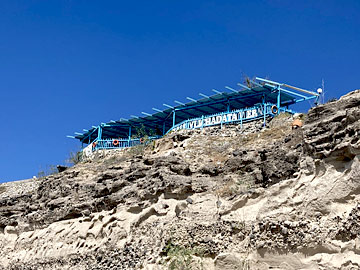
A very nice elderly man served us and we had very good tzaziki, pork souvlaki and frites with a glass of chilled white wine. The view from our table looking out over the small fishing harbour and out to sea was lovely.
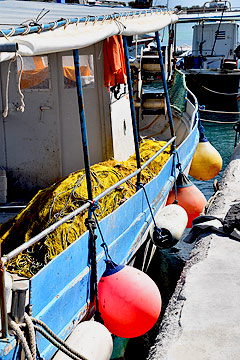
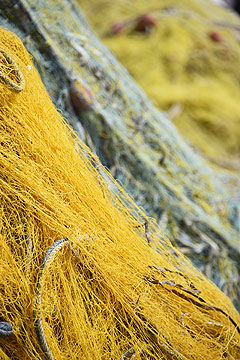
Afterwards we walked down to the harbour and walked along to the impressive cliffs.
